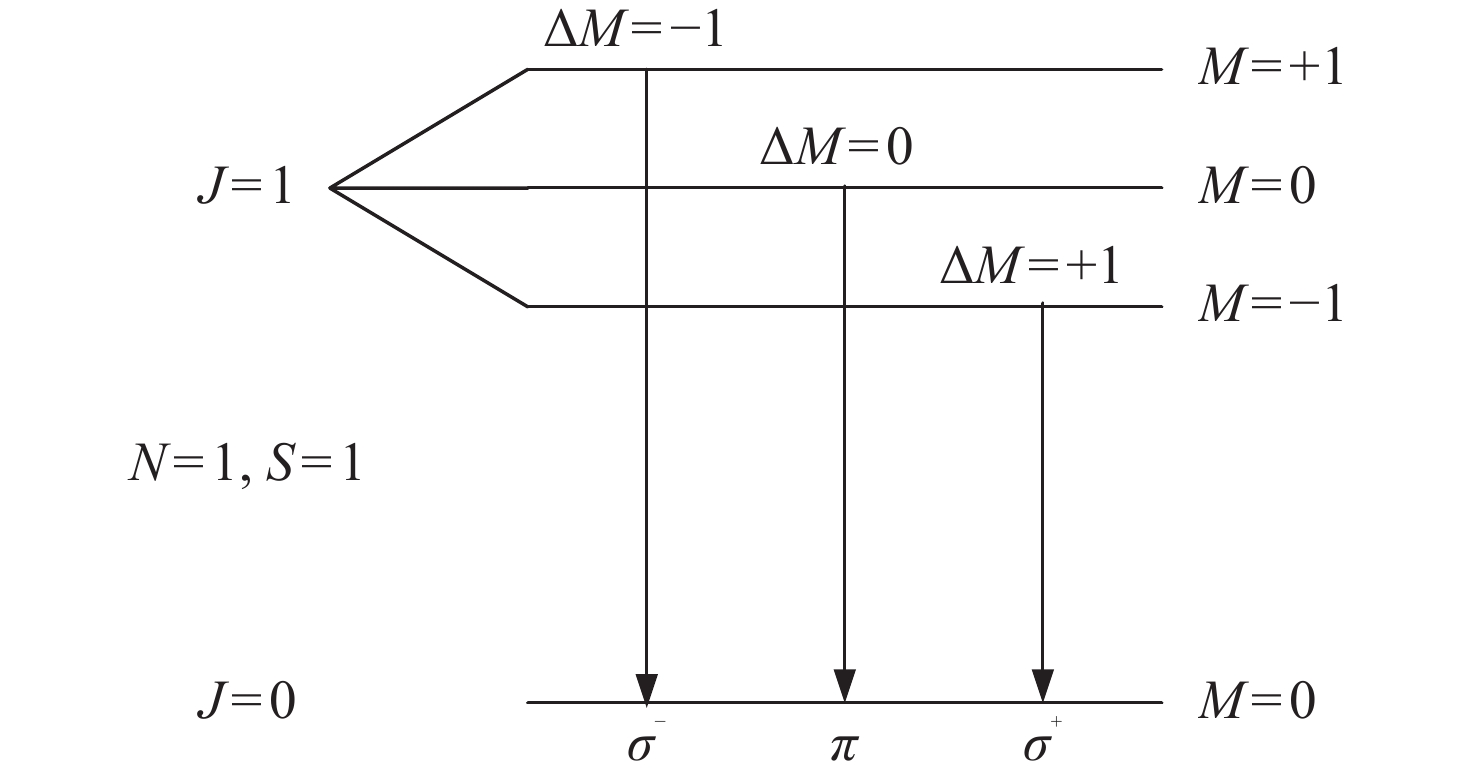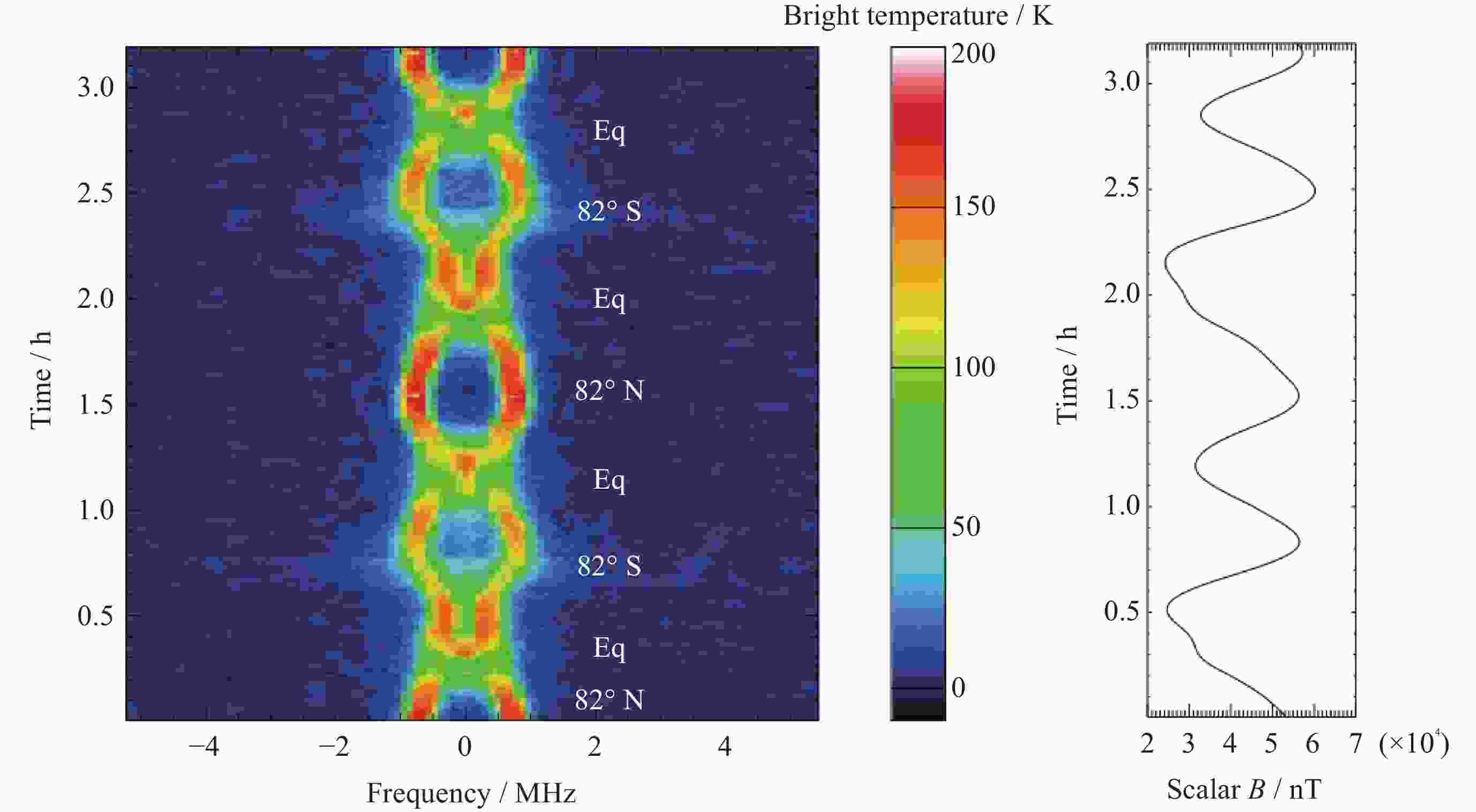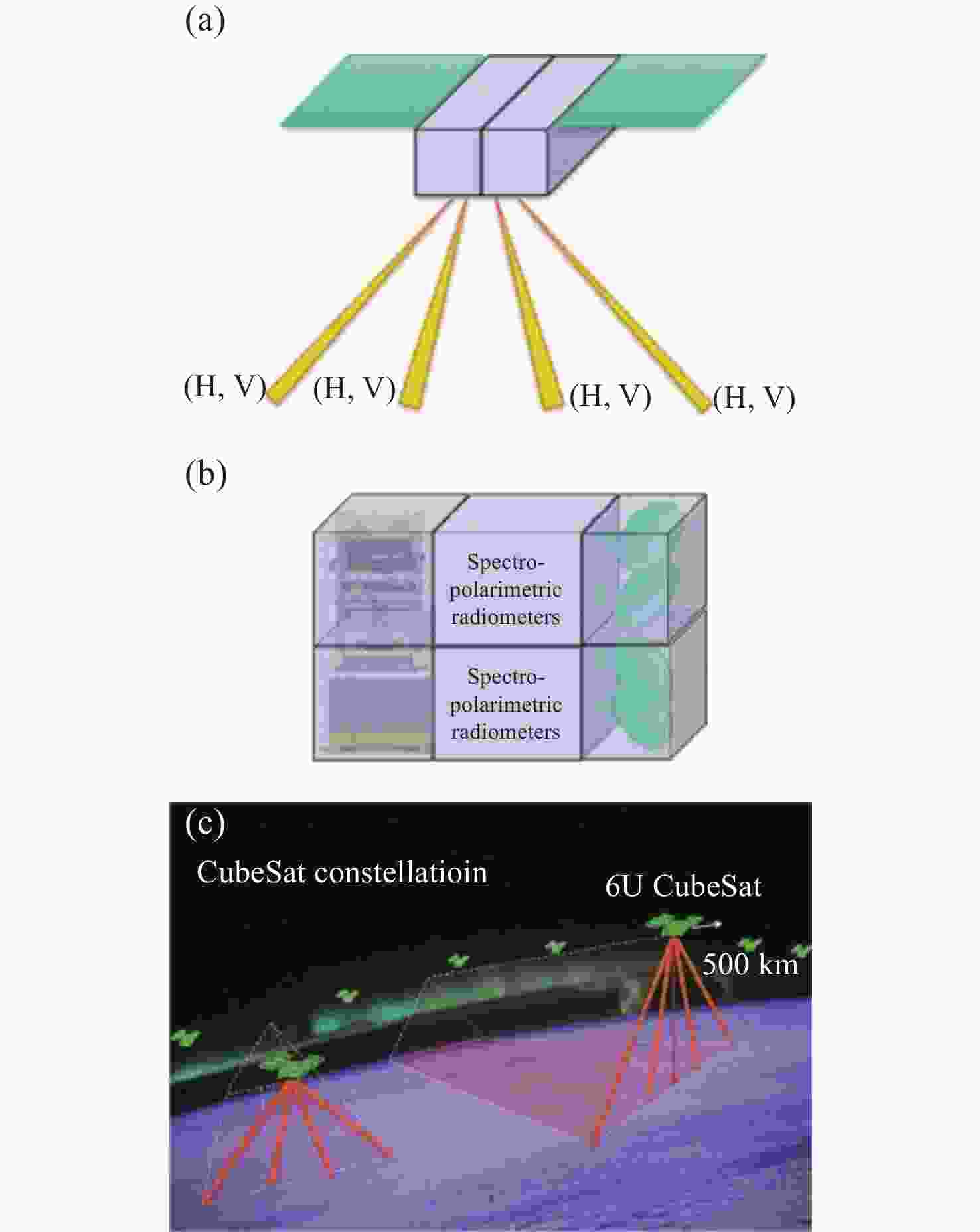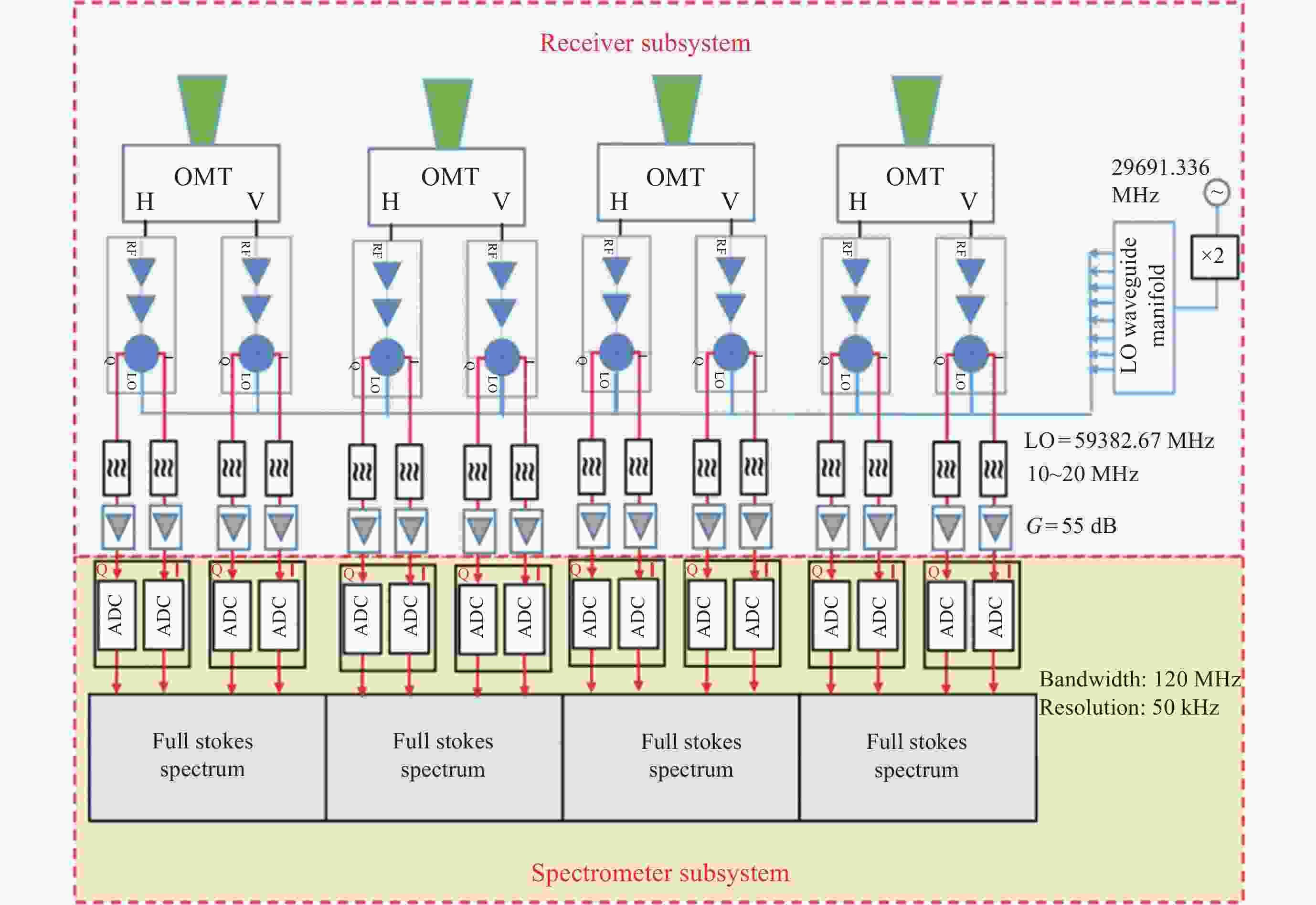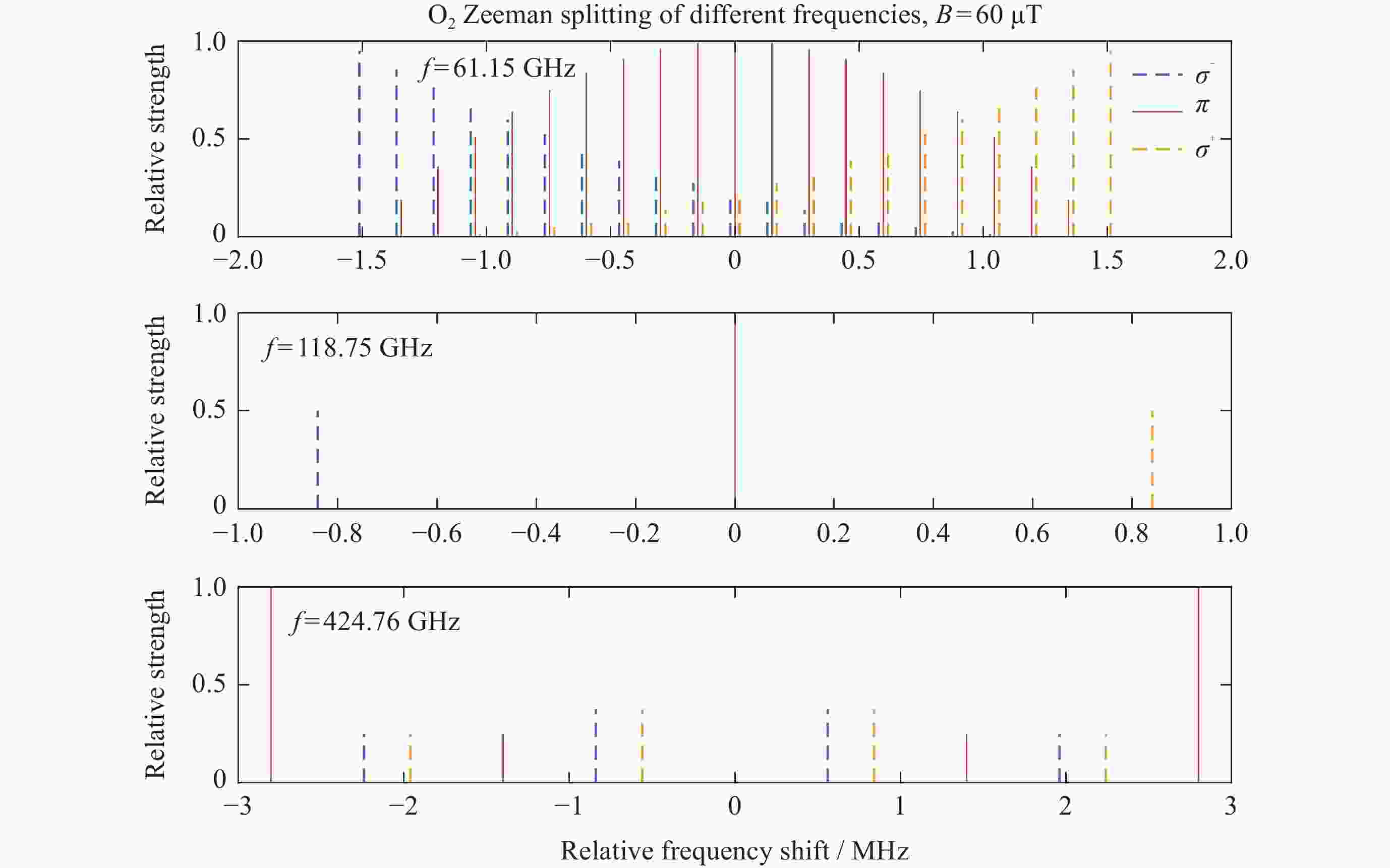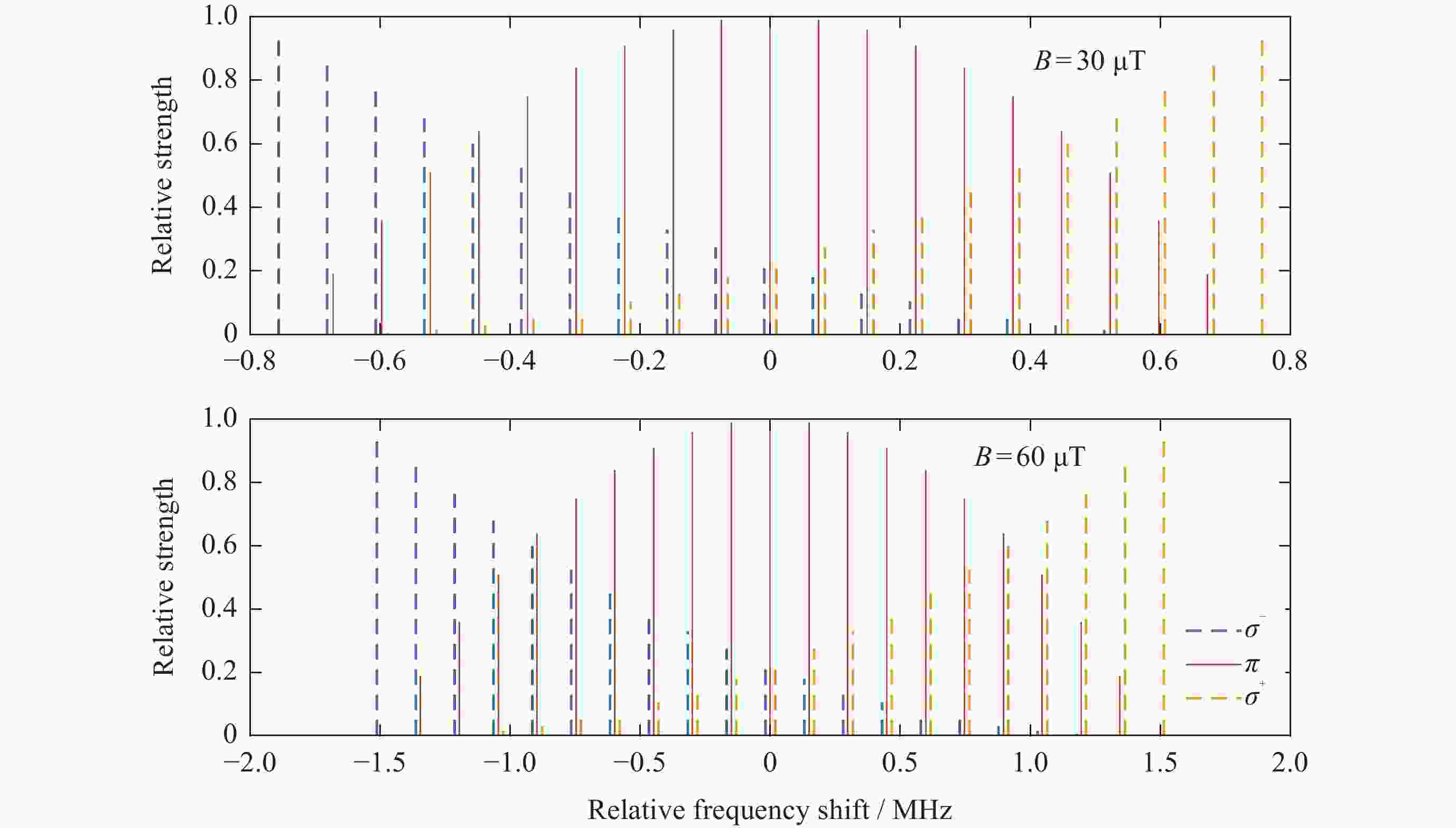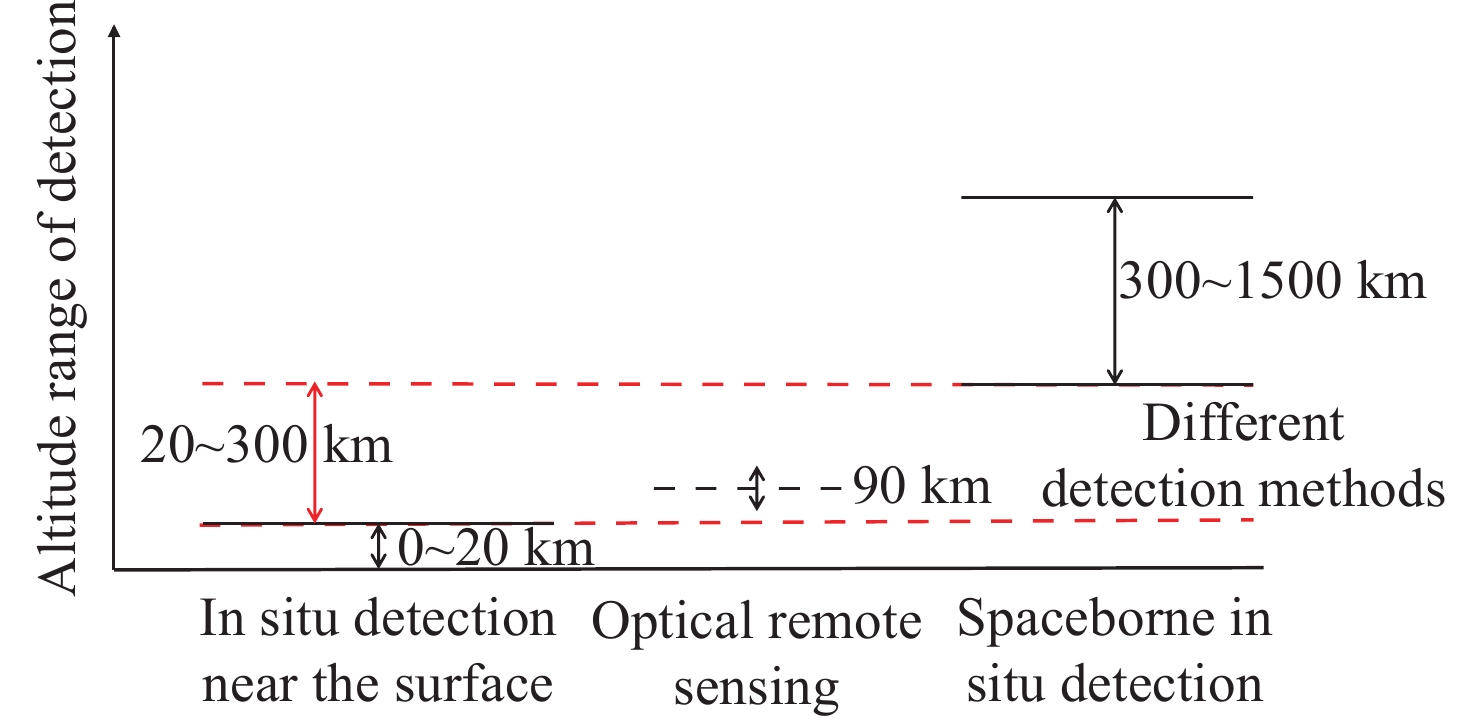Advances in the Study of the Methods for Detecting the Earth Magnetic Field from Passive Microwave Remote Sensing
-
摘要: 地磁场是地球的重要物理场之一, 地磁学在地球与空间物理以及地质等领域具有极为重要的作用. 强便利性、低成本、广空间范围的磁场测量方法与高精度、多维度的地磁测量数据的获取, 是地磁学等领域科学与应用研究得以深入的重要依据. 为解决基于高精度磁强计的原位磁场测量方法在效率和探测范围等方面的局限, 遥感探测已经逐渐开始成为一个新的磁场探测研究领域. 本文基于微波辐射计遥感手段的地磁场遥感探测方法, 综合分析了地磁场微波遥感技术方法的基本原理、研究进展与应用现状, 并在此基础上讨论了其在探测能力等方面的需求、技术难点及未来的发展趋势, 进而对未来磁场遥感探测研究, 例如行星磁场遥感探测等提出了新的展望.Abstract: The geomagnetic field is a crucial physical field of the Earth, playing an essential role in various domains such as earth and space physics research, applied research in geology, and national strategic security. To facilitate profound scientific and applied investigations in geomagnetics and related fields, it is important to develop magnetic field measurement methods that are highly convenient, cost-effective, cover a wide spatial range with exceptional precision, and provide multi-dimensional geomagnetic data. In order to overcome the limitations of on-site magnetic field measurement methods based on high-precision magnetometers regarding efficiency and detection range, remote sensing detection has emerged as a promising new area for magnetic field detection. This paper comprehensively analyzes the fundamental principles, research progressions, and application status of microwave radiometer remote sensing technology for studying the geomagnetic field. Based on this analysis, discusses the requirements and technical challenges faced by this method along with future development trends aimed at enhancing its detection capabilities. Furthermore, it proposes new prospects for future research in magnetic field remote sensing detection including planetary magnetic field remote sensing.
-
图 3 (a) Aura/MLS垂直极化接收器于2005年1月1日在82~92 km切高处118 GHz附近的氧气频谱, (b)参考IGRF-12地磁模型在相同轨迹得到的88 km高度处的地磁场强度
Figure 3. (a) O2 118 GHz spectra taken by the Aura MLS vertically polarized receiver at 82~92 km tangent height on 1 January 2005. (b) The background geomagnetic field strengths at the altitude of 88 km obtained from the IGRF-12 model following the same observational track
表 1 地磁场探测方法的主要优缺点
Table 1. Main advantages and disadvantages of geomagnetic field detection methods
探测方法 具体方法 探测高度 优势 局限性 原位探测 地磁监测站 地表及低空(通常为几百米至数千米) 精度高, 可达10–1 nT量级 受探测器所处位置限制, 探测数据的空间范围有限, 数据整合处理困难 磁测卫星 卫星轨道高度附近 探测精度、探测效率高 难以补充卫星与航空磁测之间中高层大气区域的磁场数据空白 遥感探测 钠共振荧光雷达
Radar REMPI技术90 km左右
依赖大气Xe存在区域精度可达 1 nT左右[15], 遥感手段不受探测器位置限制 系统复杂、应用性不高; 无法实现快速的全球连续观测 表 2 中高层氧分子探测相关卫星任务及探测仪比较
Table 2. Comparison of satellite missions and detector for middle and upper level oxygen molecule detection
卫星任务 国家 (计划)发射
时间探测仪器 氧分子探测
频段/GHz观测几何 反演精度
估计/nT磁场相关应用方向 Aura 美 2004 Microwave Limb Sounder, MLS 118 临边 ― 极区电激流影响的磁场
扰动SIMILES-2 日 ― SIMILES-2 771~777 临边 30 地磁场反演、近电离层高度磁场扰动测量 EZIE 美 2025 Microwave Electrojet Magnetogram, MEM 118 天底 45 中高层大气高度的磁场
扰动表 3 氧分子典型跃迁频率的谱线参数
Table 3. Spectral line parameters of typical transition frequencies of oxygen molecules
跃迁量子数 跃迁频率/GHz 谱线强度/
(J–1·cm–2·s–1·sr–1)塞曼分裂系数/
(Hz·nT–1)地磁场范围内的最大
分裂宽度/MHz谱线塞曼分裂
总条数J, N = 9, 9←10, 9 61.15 1.35×10–25 25.22 0.63~1.64 57 J, N =1, 1←0, 1 118.75 1.00×10–25 14.01 0.35~0.91 3 J, N =2, 3←2, 1 424.76 2.43×10–25 46.70 1.17~3.04 12 J, N =3, 3←2, 1 487.25 1.04×10–25 25.69 0.64~1.67 15 J, N =4, 5←4, 3 773.84 3.96×10–25 50.44 1.26~3.28 24 -
[1] 徐文耀. 地球电磁现象物理学[M]. 合肥: 中国科学技术大学出版社, 2009XU Wenyao. Physics of Electromagnetic Phenomena of the Earth[M]. Hefei: University of Science and Technology of China Press, 2009 [2] HULOT G, SABAKA T J, OLSEN N, et al. The present and future geomagnetic field[J]. Treatise on Geophysics (Second Edition), 2015, 5: 33-78 [3] 姜乙. 联合全球卫星模型和航磁数据的中国大陆地区岩石圈磁场建模研究[D]. 南京: 南京信息工程大学, 2020JIANG Yi. Research of Regional Lithospheric Field Modelling in Continent China Combining Global Satellite Models and Aeromagnetic Data[D]. Nanjing: Nanjing University of Information Science & Technology, 2020 [4] 冯彦, 孙涵, 蒋勇, 等. 20世纪中国地区主磁场变化研究[J]. 地震学报, 2013, 35(6): 865-875 doi: 10.3969/j.issn.0253-3782.2013.06.01FENG Yan, SUN Han, JIANG Yong, et al. Variation of the main magnetic field in Chinese mainland during 20th century[J]. Acta Seismologica Sinica, 2013, 35(6): 865-875 doi: 10.3969/j.issn.0253-3782.2013.06.01 [5] 郭鑫. 基于磁阻效应的地磁场探测研究[D]. 成都: 电子科技大学, 2015GUO Xin. Research on the Detection of Magnetic Field Based on Magnetoresistive[D]. Chengdu: University of Electronic Science and Technology of China, 2015 [6] 张晓旭. 基于钠原子共振荧光的地磁测量系统研究[D]. 北京: 北京科技大学, 2020ZHANG Xiaoxu. Research on A Geomagnetic Measurement System Based on the Resonance Fluorescence of Sodium Atoms[D]. Beijing: University of Science and Technology Beijing, 2020 [7] 孟庆奎, 舒晴, 徐光晶, 等. 国际地磁台网发展现状与展望[J]. 地震地磁观测与研究, 2019, 40(5): 79-84 doi: 10.3969/j.issn.1003-3246.2019.05.011MENG Qingkui, SHU Qing, XU Guangjing, et al. Development status and prospect of international geomagnetic network[J]. Seismological and Geomagnetic Observation and Research, 2019, 40(5): 79-84 doi: 10.3969/j.issn.1003-3246.2019.05.011 [8] 程德福, 陈军, 周志坚. 多星协同式卫星磁测技术发展综述[J]. 地球物理学进展, 2017, 32(6): 2304-2309 doi: 10.6038/pg20170603CHENG Defu, CHEN Jun, ZHOU Zhijian. Progress of detecting magnetic field technology in a constellation of satellites[J]. Progress in Geophysics, 2017, 32(6): 2304-2309 doi: 10.6038/pg20170603 [9] Christensen F E, Lüuhr H, Hulot G. Swarm: A constellation to study the Earth’s magnetic field[J]. Earth, Planets and Space, 2006, 58 (4): 351-358. DOI: https://doi.org/10.1186/BF03351933 [10] 申旭辉, 泽仁志玛, 袁仕耿, 等. 中国“张衡一号”电磁监测卫星计划进展[J]. 城市与减灾, 2021(4): 27-32 doi: 10.3969/j.issn.1671-0495.2021.04.005SHEN Xuhui, ZEREN Zhima, YUAN Shigeng, et al. Progress on China’s first Seismo-electromagnetic satellite[J]. City and Disaster Reduction, 2021(4): 27-32 doi: 10.3969/j.issn.1671-0495.2021.04.005 [11] 泽仁志玛, 刘大鹏, 孙晓英, 等. 张衡一号电磁卫星在轨情况及主要的科学成果[J]. 地球与行星物理论评(中英文), 2023, 54(4): 455-465ZEREN Zhima, LIU Dapeng, SUN Xiaoying, et al. Current status and scientific progress of the Zhangheng-1 satellite mission[J]. Reviews of Geophysics and Planetary Physics, 2023, 54(4): 455-465 [12] KANE T J, HILLMAN P D, DENMAN C A, et al. Laser remote magnetometry using mesospheric sodium[J]. Journal of Geophysical Research: Space Physics, 2018, 123(8): 6171-6188 doi: 10.1029/2018JA025178 [13] BUDKER D, ROMALIS M. Optical magnetometry[J]. Nature Physics, 2007, 3(4): 227-234 doi: 10.1038/nphys566 [14] HIGBIE J M, ROCHESTER S M, PATTON B, et al. Magnetometry with mesospheric sodium[J]. Proceedings of the National Academy of Sciences of the United States of America, 2011, 108(9): 3522-3525 doi: 10.1073/pnas.1013641108 [15] HAPPER W, MACDONALD G J, MAX C E, et al. Atmospheric-turbulence compensation by resonant optical backscattering from the sodium layer in the upper atmosphere[J]. Journal of the Optical Society of America A, 1994, 11(1): 263-276 doi: 10.1364/JOSAA.11.000263 [16] BUSTOS F P, CALIA D B, BUDKER D, et al. Remote sensing of geomagnetic fields and atomic collisions in the mesosphere[J]. Nature Communications, 2018, 9(1): 3981 doi: 10.1038/s41467-018-06396-7 [17] KAWAHARA T D, KITAHARA T, KOBAYASHI F, et al. Wintertime mesopause temperatures observed by lidar measurements over Syowa station (69°S, 39°E), Antarctica[J]. Geophysical Research Letters, 2002, 29(15): 1709 doi: 10.1029/2002GL015244 [18] 方欣. 钠测温测风激光雷达的研制及重力波动量通量的探测[D]. 合肥: 中国科学技术大学, 2012FANG Xin. Sodium Temperature and Wind Lidar Development and Gravity Wave Momentum Flux Observation[D]. Hefei: University of Science and Technology of China, 2012 [19] HU X, YAN Z A, GUO S Y, et al. Sodium fluorescence Doppler lidar to measure atmospheric temperature in the mesopause region[J]. Chinese Science Bulletin, 2011, 56(4/5): 417-423 doi: 10.1007/s11434-010-4306-x [20] SHE C Y, SHERMAN J, YUAN T, et al. The first 80-hour continuous lidar campaign for simultaneous observation of mesopause region temperature and wind[J]. Geophysical Research Letters, 2003, 30(6): 1319 doi: 10.1029/2002GL016412 [21] 程永强. 可重部署钠层测风测温激光雷达观测与研究[D]. 北京: 中国科学院国家空间科学中心, 2016CHENG Yongqiang. Research and Observation of Relocatable Sodium Wind/Temperature Lidar[D]. Beijing: National Space Science Center, Chinese Academy of Sciences, 2016 [22] DOGARIU A, MILES R B. Detecting localized trace species in air using radar resonance-enhanced multi-photon ionization[J]. Applied optics, 2011, 50(4): 68-73 doi: 10.1364/AO.50.000A68 [23] DOGARIU A, CHNG T L, MILES R B. Towards remote magnetic anomaly detection using radar REMPI[C]//2014 Conference on Lasers and Electro-Optics (CLEO): Science and Innovations 2014. San Jose: Optical Society of America, 2014: SM4E. 4. DOI: 10.1364/cleo_si.2014.sm4e.4 [24] DOGARIU A, STEIN C, GLASER A, et al. Long range trace detection by radar REMPI[C]//Proceedings of SPIE 8024, Advanced Environmental, Chemical, and Biological Sensing Technologies VIII. Orlando: SPIE, 2011: 80240G. DOI: 10.1117/12.883982 [25] GALEA C A, SHNEIDER M N, DOGARIU A, et al. Radar REMPI measurements in the presence of a magnetic field[C]//AIAA Scitech 2019 Forum. San Diego: American Institute of Aeronautics and Astronautics, 2019. DOI: 10.2514/6.2019-0195 [26] 种洋, 常宜峰, 柴洪洲, 等. 不同卫星轨道高度对地壳磁场反演的影响研究[J]. 地球物理学报, 2021, 64(3): 796-804 doi: 10.6038/cjg2021N0349CHONG Yang, CHANG Yifeng, CHAI Hongzhou, et al. Analysis on the inversion influence of crustal geomagnetic field at different satellite orbital altitudes[J]. Chinese Journal of Geophysics, 2021, 64(3): 796-804 doi: 10.6038/cjg2021N0349 [27] 常宜峰. 卫星磁测数据处理与地磁场模型反演理论与方法研究[D]. 郑州: 解放军信息工程大学, 2015CHANG Yifeng. Research on Satellite Geomagnetic Data Process and Geomagnetic Model Recovery Theory and Method[D]. Zhengzhou: PLA Information Engineering University, 2015 [28] 徐冰. 国外磁力探测卫星的发展[J]. 国际太空, 2015(9): 16-21XU Bing. Development of foreigh geomagnetic exploration satellites[J]. Space International, 2015(9): 16-21 [29] PURUCKER M. Advances in remote sensing of magnetic fields[J]. Eos, Transactions American Geophysical Union, 2014, 95(38): 343 [30] ZEEMAN P. XXXII. On the influence of magnetism on the nature of the light emitted by a substance[J]. The London, Edinburgh, and Dublin Philosophical Magazine and Journal of Science, 1897, 43(262): 226-239 doi: 10.1080/14786449708620985 [31] HARTMANN G K, DEGENHARDT W, RICHARDS M L, et al. Zeeman splitting of the 61 Gigahertz oxygen (O2) line in the mesosphere[J]. Geophysical Research Letters, 1996, 23(17): 2329-2332 doi: 10.1029/96GL01043 [32] HAN Y, WENG F, LIU Q, et al. A fast radiative transfer model for SSMIS upper atmosphere sounding channels[J]. Journal of Geophysical Research: Atmospheres, 2007, 112: D11121 doi: 10.1029/2006JD008208 [33] ERIKSSON P, BUEHLER S A, DAVIS C P, et al. ARTS, the atmospheric radiative transfer simulator, version 2[J]. Journal of Quantitative Spectroscopy and Radiative Transfer, 2011, 112(10): 1551-1558 doi: 10.1016/j.jqsrt.2011.03.001 [34] LARSSON R, BUEHLER S A, ERIKSSON P, et al. A treatment of the Zeeman effect using Stokes formalism and its implementation in the Atmospheric Radiative Transfer Simulator (ARTS)[J]. Journal of Quantitative Spectroscopy and Radiative Transfer, 2014, 133: 445-453 doi: 10.1016/j.jqsrt.2013.09.006 [35] NAVAS-GUZMÁN F, KÄMPFER N, MURK A, et al. Zeeman effect in atmospheric O2 measured by ground-based microwave radiometry[J]. Atmospheric Measurement Techniques, 2015, 8(4): 1863-1874 doi: 10.5194/amt-8-1863-2015 [36] YEE J H, GJERLOEV J, WU D, et al. First application of the Zeeman technique to remotely measure auroral electrojet intensity from space[J]. Geophysical Research Letters, 2017, 44(20): 10134-10139 doi: 10.1002/2017GL074909 [37] OCHIAI S, BARON P, NISHIBORI T, et al. SMILES-2 mission for temperature, wind, and composition in the whole atmosphere[J]. SOLA, 2017, 13A (Special_Edition): 13-18. DOI: 10.2151/sola.13A-003 [38] BARON P, OCHIAI S, DUPUY E, et al. Potential for the measurement of mesosphere and lower thermosphere (MLT) wind, temperature, density and geomagnetic field with Superconducting Submillimeter-Wave Limb-Emission Sounder 2 (SMILES-2)[J]. Atmospheric Measurement Techniques, 2020, 13(1): 219-237 doi: 10.5194/amt-13-219-2020 [39] LAUNDAL K M, YEE J H, MERKIN V G, et al. Electrojet estimates from mesospheric magnetic field measurements[J]. Journal of Geophysical Research: Space Physics, 2021, 126(5): e2020JA028644 doi: 10.1029/2020JA028644 [40] YEE J H, GJERLOEV J, WU D. Remote sensing of magnetic fields induced by electrojets from space: measurement techniques and sensor design[M]//WANG W B, ZHANG Y L, PAXTON L J. Upper Atmosphere Dynamics and Energetics. Hoboken: American Geophysical Union, 2021: 451-468. DOI: 10.1002/9781119815631.ch21 [41] KASAI Y, SAGAWA H, KURODA T, et al. Overview of the Martian atmospheric submillimetre sounder FIRE[J]. Planetary and Space Science, 2012, 63-64: 62-82 doi: 10.1016/j.pss.2011.10.013 [42] LARSSON R, RAMSTAD R, MENDROK J, et al. A method for remote sensing of weak planetary magnetic fields: simulated application to Mars[J]. Geophysical Research Letters, 2013, 40(19): 5014-5018 doi: 10.1002/grl.50964 [43] LARSSON R, MILZ M, ERIKSSON P, et al. Martian magnetism with orbiting sub-millimeter sensor: simulated retrieval system[J]. Geoscientific Instrumentation, Methods and Data Systems, 2017, 6(1): 27-37 doi: 10.5194/gi-6-27-2017 [44] LARSSON R, KASAI Y, KURODA T, et al. Mars submillimeter sensor on microsatellite: sensor feasibility study[J]. Geoscientific Instrumentation, Methods and Data Systems, 2018, 7(4): 331-341 doi: 10.5194/gi-7-331-2018 [45] YAMADA T, BARON P, NEARY L, et al. Observation capability of a ground-based terahertz radiometer for vertical profiles of oxygen and water abundances in Martian atmosphere[J]. IEEE Transactions on Geoscience and Remote Sensing, 2022, 60: 4106311 doi: 10.1109/TGRS.2022.3152271 -
-





 王可昕 女, 1996年3月出生于河北省石家庄市, 现为中国科学院国家空间科学中心博士研究生, 主要研究方向为微波遥感信息处理、定标及应用研究等. E-mail:
王可昕 女, 1996年3月出生于河北省石家庄市, 现为中国科学院国家空间科学中心博士研究生, 主要研究方向为微波遥感信息处理、定标及应用研究等. E-mail: 
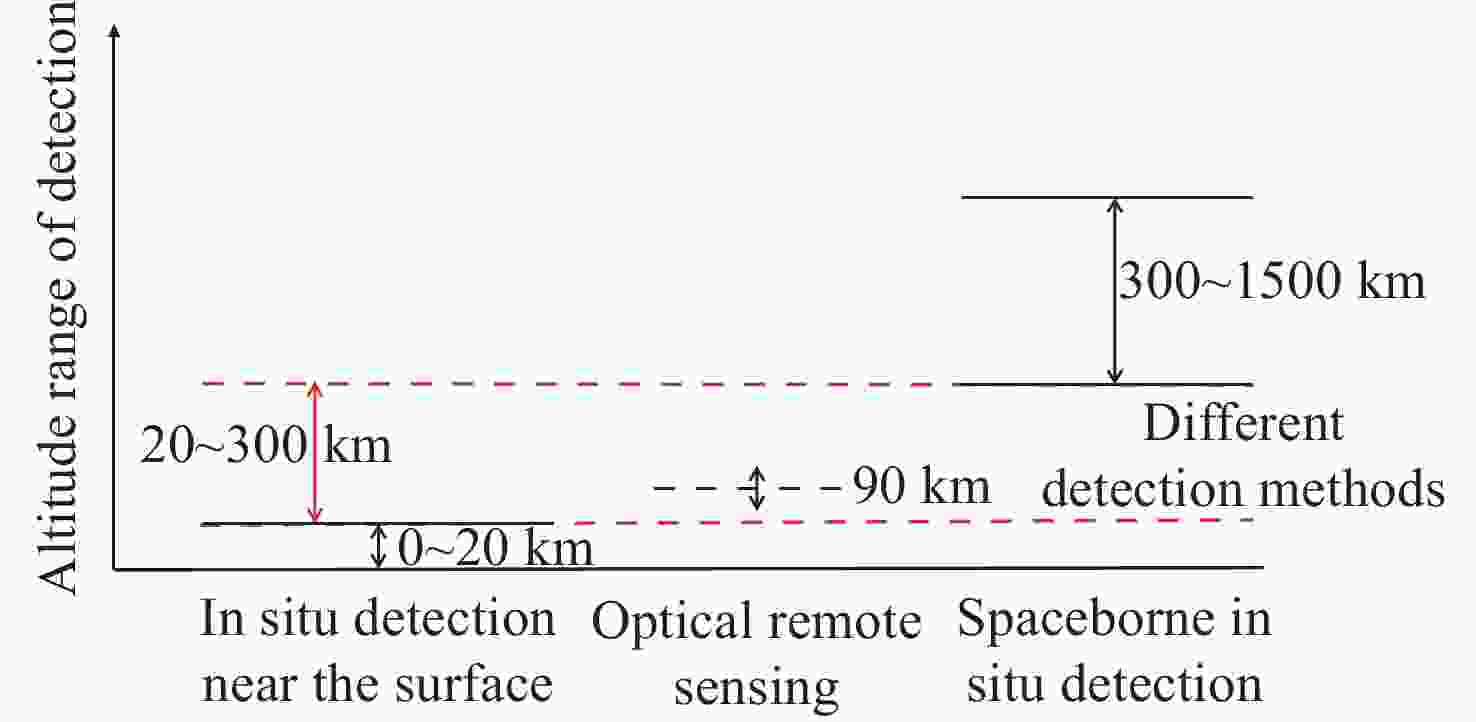
 下载:
下载:
